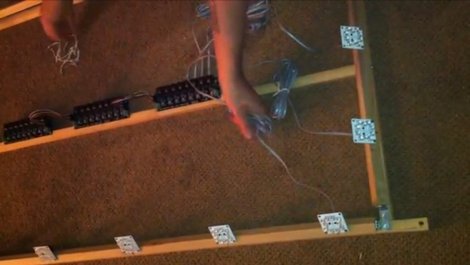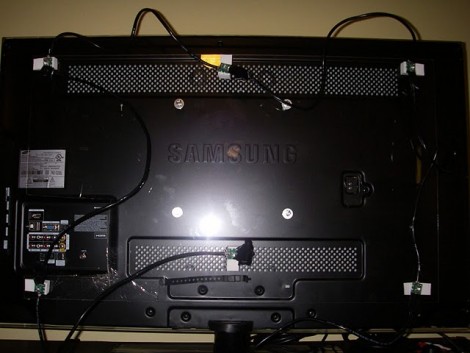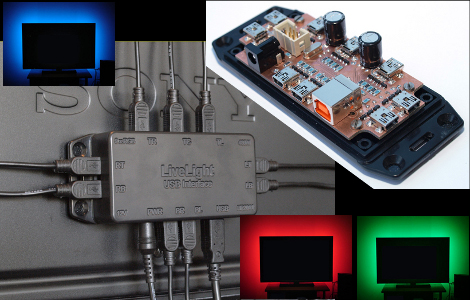
[Garrett Mace] decided to beef up his 58 inches of plasma with 60 Watts of LED lighting. After seeing a ton of Ambilight clones using his LED modules, he’s built his own powerful system. Not surprisingly, it’s nothing short of professional-grade work.
Kudos to [Garrett] for showing the entire process in the video after the break. We’re talking about his planning stages, which are so often left out of build logs. He first measures the back of the television, and does some testing for distance and angle of the Satellite LED modules to establish how many should be used and to estimate the optimal spacing. From there he modelled a framing system before getting down to the actual build.
The wood frame is made up of a box with a horizontal crossbar serving as a place to mount the drivers. Around the edges, tilting rails were added to make the angle of the LED modules adjustable. As with many other Ambilight clones, [Garrett] uses the boblight software to drive his system and we appreciate it that he included his configuration file for reference. Once up and running the effect is breathtaking (and possibly blinding).
Continue reading “Macetech Takes On Its Own Ambilight Clone Hack”













